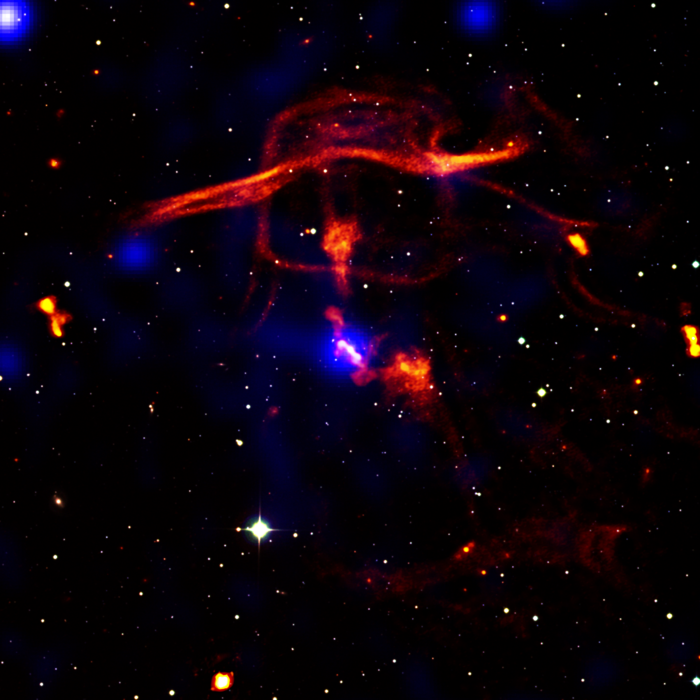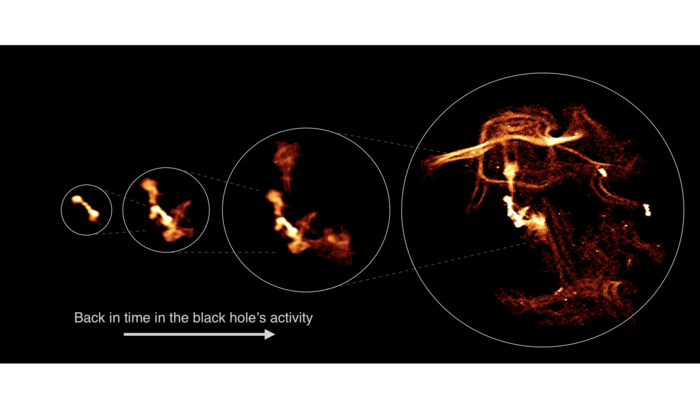Black holes determine the evolution of the universe
In principle, they can only be recognized by what you can’t see – and yet black holes have a decisive effect on the evolution of the universe. That’s according to a new study by an international team of researchers from the University of Bologna and elsewhere. The work, published in Nature Astronomy, focuses on the Nest200047 system – a group of about 20 galaxies at a distance of about 200 million light-years from Earth. The central galaxy of this system hosts an active black hole, around which the researchers observed many pairs of gas bubbles of different ages, some unknown filaments of magnetic fields and relativistic particles at an extent of hundreds of thousands of light-years.
“Our study shows how the gas bubbles accelerated by the black hole expand and change over time. This produces mushroom-shaped structures, rings and filaments that resemble those of a violent volcanic eruption on Earth,” explains Marisa Brienza, lead author of this study. It is known that there is a supermassive black hole at the core of every galaxy. Its activity affects the evolution of the galaxy and its surroundings. When black holes are active, they consume everything around them, releasing enormous amounts of energy, such as particle streams, which in turn create bubbles of particles and magnetic fields, indirectly heating and moving the intergalactic medium.
The study now suggests that active black holes have effects up to 100 times larger than the host galaxy, and that these effects last hundreds of millions of years.
“Our observations of Nest200047 show how magnetic fields and very old particles accelerated by black holes, and consequently aged, play a central role in transferring energy to the outer regions of galaxy groups,” explains Annalisa Bonafede, one of the study’s authors. For the study, the researchers also used X-ray observations made with the eROSITA telescope aboard the SRG Space Observatory. The X-ray data allowed the researchers to better study the properties of the intergalactic medium surrounding the radiating gas bubbles. In the process, they found more surprises: thin filaments of gas up to a million light-years long, made up of particles traveling at close to the speed of light, and accompanying magnetic fields. According to the researchers, these filaments are the remnants of bubbles produced by the Nest200047 black hole hundreds of millions of years ago, which are now bursting and mixing with the intergalactic medium – far from the black hole that originally produced them, reshaping its environment over an enormous radius.

